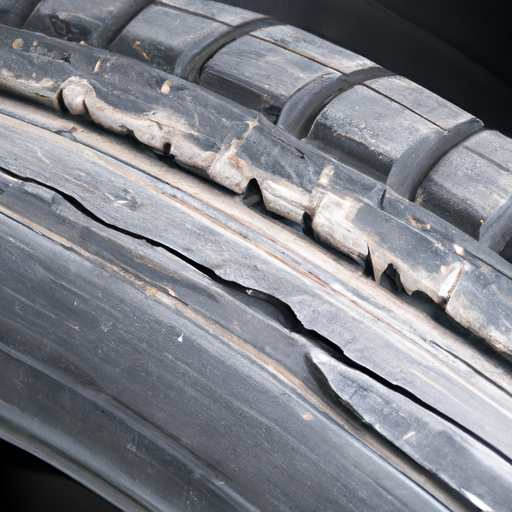Have you ever wondered why split rims are considered dangerous? Split rims refer to a type of wheel assembly commonly used in heavy-duty vehicles, such as trucks and buses. While they were once popular due to their simplicity and ease of assembly, split rims have proven to be a significant safety hazard over the years. This article will explore the reasons behind their danger and shed light on the potential risks associated with their usage.

Overview
In the world of automobiles, tires are an essential component that ensures both safety and performance on the road. However, not all tires are created equal, and some types can pose serious risks and dangers. One such type is the split rim, which, despite their prevalence in the past, have been deemed unsafe in many jurisdictions. Split rims are a design that involves two separate pieces of metal held together by bolts or fasteners, creating a rim that can be disassembled for tire repairs or replacements. While split rims may provide convenience in terms of tire maintenance, they also come with potential dangers that cannot be overlooked. In this article, we will explore the history behind split rims, the dangers they present, and the reasons why they have largely fallen out of favor in the automotive industry.
What Are Split Rims?
To understand the potential dangers of split rims, it is important to first grasp their nature and design. Split rims, also known as multi-piece or two-piece rims, consist of two separate components: the outer rim and the inner wheel base. These two pieces are connected by a series of bolts or fasteners, holding the tire in place securely. The idea behind this design is to allow for easy disassembly and reassembly of the tire, making maintenance and repairs simpler and more efficient. Split rims were originally popularized in the early 20th century when advancements in tire technology necessitated a more accessible way to service tires. However, as time went on and safety concerns arose, the use of split rims became less prevalent.

History Behind Split Rims
The history of split rims dates back to the early days of the automobile industry when the need for easy tire maintenance became apparent. Prior to the introduction of split rims, tires were mounted directly onto a one-piece rim, making repairs and replacements time-consuming and labor-intensive. Split rims revolutionized the industry by allowing the tire to be disassembled without the need for specialized equipment. This newfound convenience came at a time when tires were more prone to damage due to poor road conditions and a lack of modern suspension systems. Split rims provided a solution, allowing drivers to quickly address tire issues and get back on the road with minimal downtime.

The Potential Dangers of Split Rims
While split rims were once a game-changer in the automotive industry, their potential dangers ultimately outweighed the convenience they provided. Over the years, numerous incidents and accidents linked to split rims have shed light on the risks associated with this tire design. Understanding these dangers is crucial for anyone considering the use or maintenance of split rims.
1. Explosions and Tire Blowouts
Perhaps the most significant danger associated with split rims is the potential for explosions and tire blowouts. The nature of the design, with the two separate components held together by bolts, creates opportunities for pressure buildup and instability. If the bolts are not properly tightened or the rim is damaged, the tire can experience a catastrophic failure, resulting in an explosion or blowout. These incidents can occur during routine maintenance or even while the vehicle is in motion, leading to the loss of control and, in some cases, serious injuries or fatalities.
2. Difficulty in Mounting and Dismounting Tires
Although split rims were originally intended to simplify tire maintenance, they can, in fact, make the process more challenging. Mounting and dismounting tires on split rims require careful attention to detail and proper technique. The bolts must be loosened and tightened in a specific order and with the correct torque specification to ensure a secure fit. This meticulous process often demands specialized tools and knowledge, creating a barrier for regular drivers who may not possess the expertise required. Improper mounting or dismounting can lead to issues such as inaccurate tire balancing, uneven wear, and compromised tire integrity.
3. Increased Risk of Tire Separation
In addition to the dangers associated with mounting and dismounting tires, split rims also pose an increased risk of tire separation. The design allows for the possibility of the rim components shifting or becoming misaligned, leading to an unstable tire or even detachment from the vehicle. This can be particularly hazardous at high speeds or in situations requiring sudden maneuvers, as it can result in loss of control and catastrophic accidents. The potential for tire separation is a significant concern that should not be underestimated when considering the safety of split rims.
4. Corrosion and Rust Issues
Split rims, by their very design, create potential areas for moisture and debris accumulation, making them prone to corrosion and rust. Over time, this corrosion can weaken the rim’s structural integrity, compromising its ability to handle the stresses and forces exerted by the tire. The presence of rust can also make disassembly and reassembly more challenging, as the bolts may become corroded or seized. The combination of corrosion and rust issues further underscores the inherent dangers associated with split rims.
5. Complicated Maintenance and Repair
Another notable disadvantage of split rims is the complexity of their maintenance and repair. Due to their two-piece design, they require more time and effort to properly inspect, service, and replace. The disassembly process involves carefully removing the bolts while ensuring they are not damaged or stripped in the process. With the inner and outer components separated, each must be thoroughly inspected for any signs of wear, damage, or corrosion. Reassembly necessitates meticulous alignment and precise torque application to ensure a secure fit and avoid future issues. The overall complexity of split rims compared to their one-piece counterparts often leads to higher labor costs and more specialized expertise needed for maintenance and repair tasks.

Conclusion
While split rims were once viewed as innovative and convenient, it is clear that the numerous potential dangers they present have resulted in their decline in the automotive industry. The risks associated with split rims, including explosions, difficulty in mounting and dismounting tires, increased risk of tire separation, corrosion and rust issues, as well as complicated maintenance and repair, have led many jurisdictions to ban their use altogether. As tire technology continues to evolve, alternative designs that prioritize safety, ease of maintenance, and performance have taken precedence. As a responsible driver, it is crucial to be aware of the potential dangers associated with split rims and opt for safer tire options that prioritize your well-being and that of others on the road. Remember, your safety is not worth compromising for the sake of convenience.

